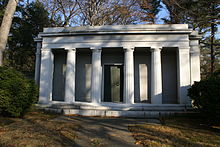
Talladega County is one of the sixty-seven counties located in the east central portion of the U.S. state of Alabama. As of the 2020 census, the population was 82,149. Its county seat is Talladega.

Gantts Quarry is a quarry and ghost town in Talladega County, Alabama, United States. The population was 0 at the 2000 census, although it had seven residents as late as the 1998 population estimate. Incorporated in 1910 to keep neighboring Sylacauga from annexing it, it was officially disincorporated after its population dwindled to zero effective December 31, 2001.
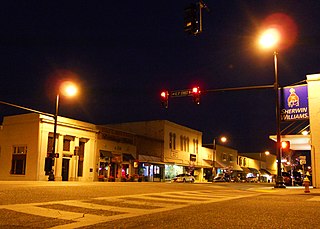
Sylacauga is a city in Talladega County, Alabama, United States. At the 2020 census, the population was 12,578.

The Town of Marble is a Statutory Town in Gunnison County, Colorado, United States. The town population was 133 at the 2020 United States Census.

Carrara marble, Luna marble to the Romans, is a type of white or blue-grey marble popular for use in sculpture and building decor. It has been quarried since Roman times in the mountains just outside the city of Carrara in the province of Massa and Carrara in the Lunigiana, the northernmost tip of modern-day Tuscany, Italy.
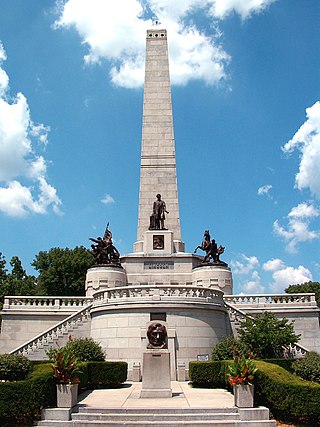
The Lincoln Tomb is the final resting place of Abraham Lincoln, the 16th president of the United States; his wife Mary Todd Lincoln; and three of their four sons: Edward, William, and Thomas. It is located in Oak Ridge Cemetery in Springfield, Illinois.

The Holston Formation, alternately known as the Holston Limestone, is a stratigraphic unit of Ordovician age within the Chickamauga Group in the Ridge-and-Valley physiographic province of the southeastern United States. A 120-mile (190 km) long outcrop belt of the Holston in East Tennessee is the source of the decorative building stone known as Tennessee marble.

Yule Marble is a marble of metamorphosed Leadville Limestone found only in the Yule Creek Valley, in the West Elk Mountains of Colorado, 2.8 miles (4.5 km) southeast of the town of Marble, Colorado. First discovered in 1873, it is quarried underground at an elevation of 9,300 feet (2,800 m) above sea level—in contrast to most marble, which is quarried from an open pit and at much lower elevations.
Wallace Augustus Rayfield (1874–1941), was an American architect and educator. He was the second formally educated practicing African American architect in the United States.
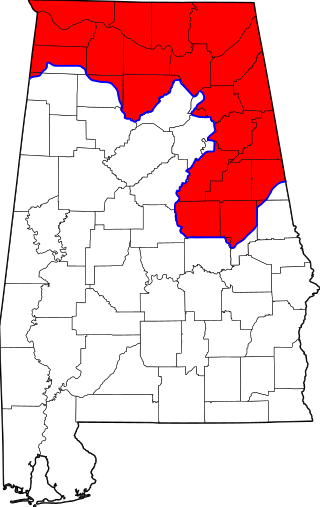
Area codes 256 and 938 are telephone area codes in the North American Numbering Plan (NANP) for North Alabama, as well as some eastern portions of the state. The two area codes form an overlay plan for the same numbering plan area. Area code 256 was created in 1998, and 938 was added in 2010.

Giuseppe Moretti was an Italian émigré sculptor who became known in the United States for his public monuments in bronze and marble. Notable among his works is Vulcan in Birmingham, Alabama, which is the largest cast iron statue in the world. On a personal level, Moretti was "known for his eclectic personality and for always wearing a green tie," but professionally, is claimed to be "the first man to use aluminum in art." Moretti enjoyed some celebrity in his lifetime, and was a friend of famed Italian tenor Enrico Caruso. It is even reported that the singer repeatedly praised Moretti's voice.

WYEA is a radio station broadcasting a country music format. Licensed to Sylacauga, Alabama, United States, and two of only three commercial radio stations in Talladega County, they are owned and operated by Marble City Media LLC.
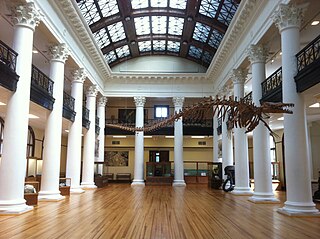
The Alabama Museum of Natural History is the state's natural history museum, located in Smith Hall at the University of Alabama campus in Tuscaloosa. The oldest museum in the state, it was founded in 1831. The exhibits depict the natural diversity of Alabama from the Age of Dinosaurs, the Coal Age, and the Ice Age. Collections include items relating to geology, zoology, mineralogy, paleontology, ethnology, history, and photography. The Grand Gallery Exhibition Hall houses a replica of a Basilosaurus cetoides, an Eocene whale that has been designated as the State Fossil. Exhibits of special interest include the skull of an American mastodon dredged from the Tombigbee River near Demopolis and the Hodges meteorite. The latter hit a woman as it fell to earth near Sylacauga on November 30, 1954. The museum sponsors expeditions throughout the year, as it has since 1979.

Tennessee marble is a type of crystalline limestone found only in East Tennessee, in the southeastern United States. Long esteemed by architects and builders for its pinkish-gray color and the ease with which it is polished, this stone has been used in the construction of numerous notable buildings and monuments throughout the United States and Canada, including the National Gallery of Art and the National Air and Space Museum in Washington, D.C., the Minnesota State Capitol, as well as parts of the United States Capitol in Washington, Grand Central Terminal in New York, and Union Station in Toronto. Tennessee marble achieved such popularity in the late-19th century that Knoxville, the stone's primary finishing and distribution center, became known as "The Marble City."

The Birmingham metropolitan area, sometimes known as Greater Birmingham, is a metropolitan area in north central Alabama centered on Birmingham, Alabama, United States.
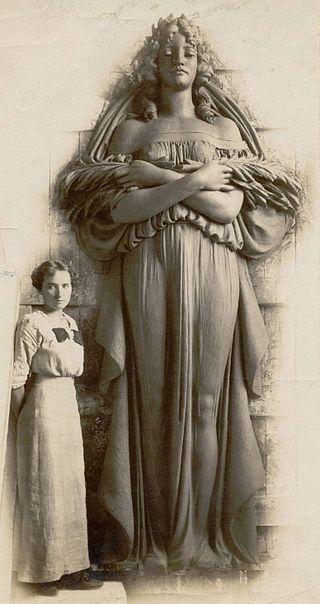
Geneva Mercer was an American artist from Alabama. Best known as a sculptor, she was also an accomplished painter in her later years. Although most of her early work with Italian sculptor Giuseppe Moretti was done under his name, her best known individual works include Joyous Boy, Pied Piper, the Flimp Fountain, and several Julia Tutwiler sculptures located at the Alabama Department of Archives and History, University of Alabama, and University of Montevallo. She was posthumously inducted into the Alabama Women's Hall of Fame in 1989.
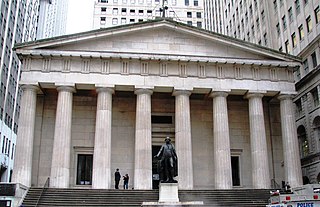
Tuckahoe marble is a type of marble found in southern New York state and western Connecticut. Part of the Inwood Formation of the Manhattan Prong, it dates from the Late Cambrian to the Early Ordovician ages. It was first quarried on a large scale commercially in the village of Tuckahoe, New York. Deposits are also found in the Inwood area of Manhattan, New York City, in Eastchester, New York, and extending southward to parts of the Bronx, such as Kingsbridge, Mott Haven, Melrose and Tremont and Marble Hill. Other locations in Westchester County include Ossining, Hastings, and Thornwood.

The Brooklyn Tower is a supertall mixed-use, primarily residential skyscraper in the Downtown neighborhood of Brooklyn in New York City. Developed by JDS Development Group, it is situated on the north side of DeKalb Avenue near Flatbush Avenue. The main portion of the skyscraper is a 93-story, 1,073-foot (327 m) residential structure designed by SHoP Architects. Preserved at the skyscraper's base is the Dime Savings Bank Building, designed by Mowbray and Uffinger, which dates to the 1900s.

The Woodbury Granite Company (WGC) was a producer of rough and finished granite products. Incorporated in 1887, purchased and significantly reorganized in 1896, and expanded by merger in 1902 and thereafter, the company operated quarries principally in Woodbury, Vermont, but its headquarters and stone-finishing facilities were located in nearby Hardwick. Beginning as a quarrier and seller of rough stone, the company expanded into the business of finishing cut stone and grew from there. It made its name as a supplier of architectural (structural) granite, and grew to become the United States' largest producer, supplying the stone for many notable buildings, including several state capitols, numerous post offices, and many office buildings.








